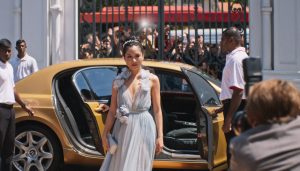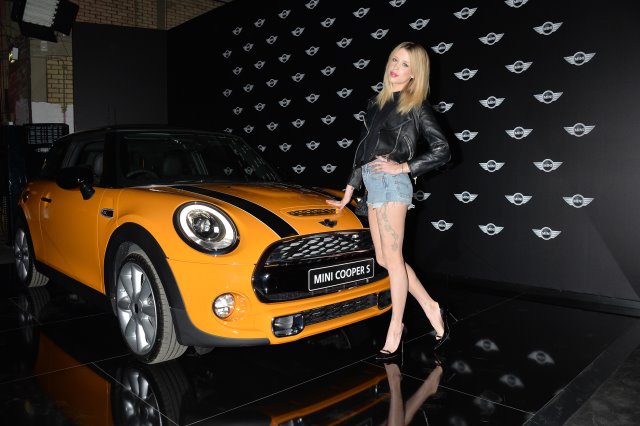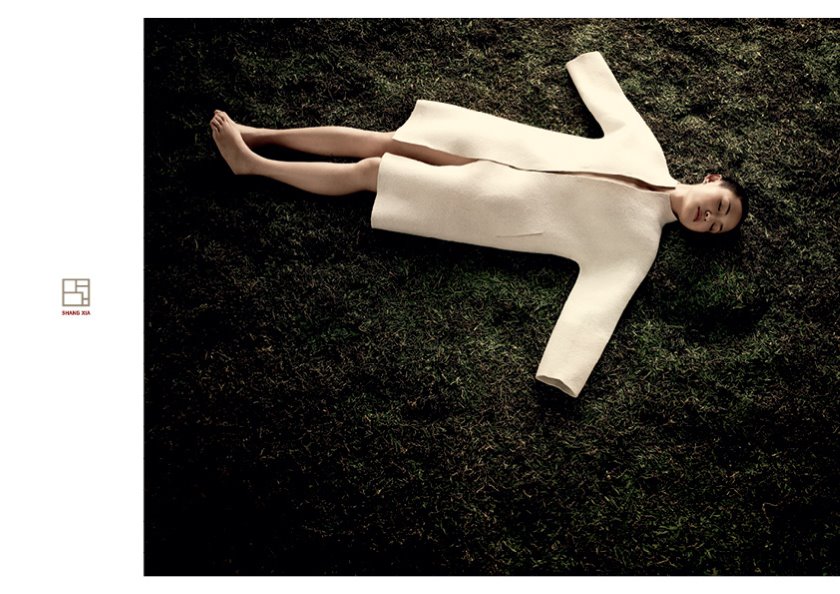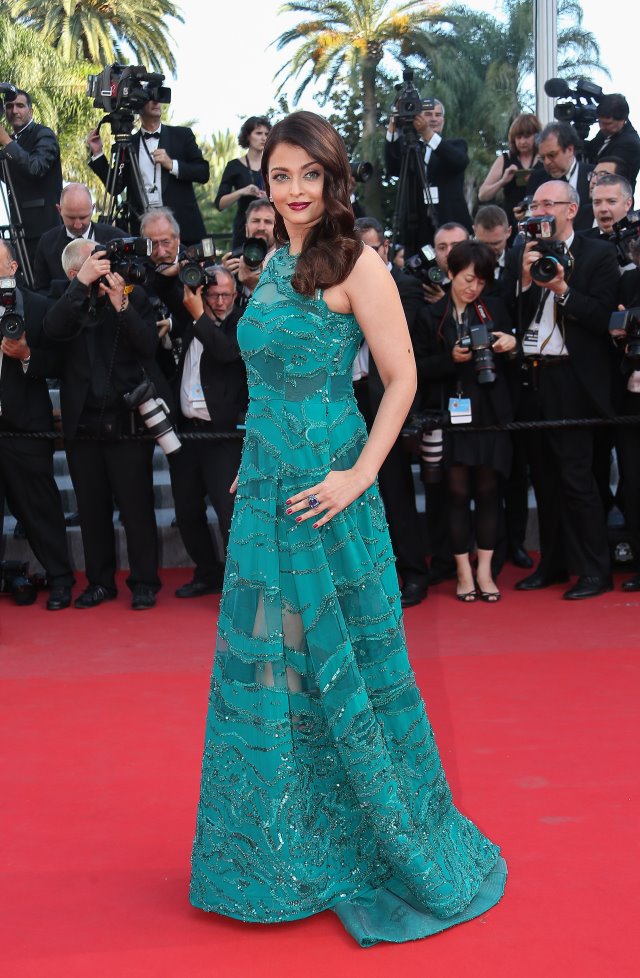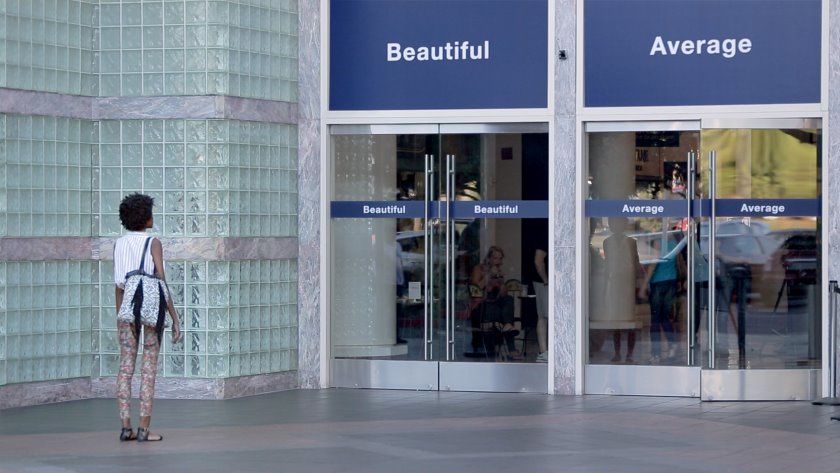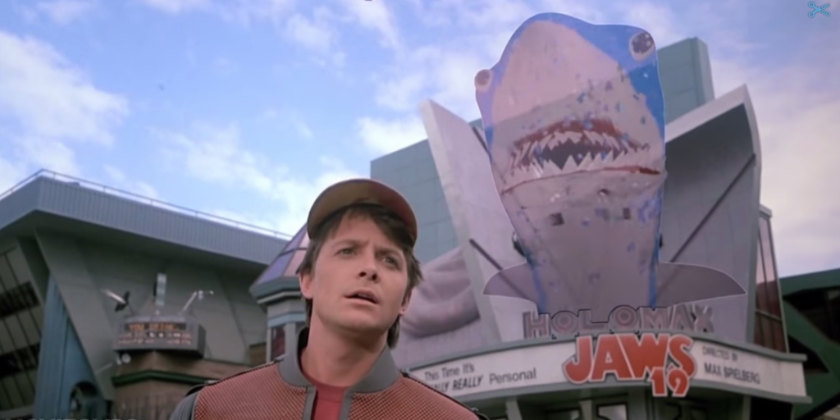

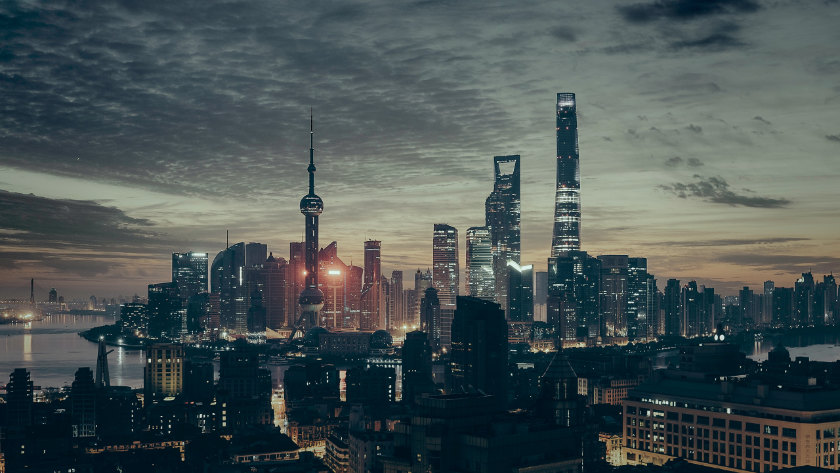
Adi Constantin/Unsplash
Above, from top: The real 2015 and one photo that summarizes the decade: Kendall and Kylie Jenner go shopping for Ugg shoes in New York, and take a selfie. The 2015 of fiction: Michael J. Fox outside a cinema in Back to the Future Part II (1989). Still from Ridley Scott’s 1982 film Blade Runner, set in a Los Angeles of 2019, in some ways mirrored more by the metropolises of China. Unpredictable to most: few in the 20th century, with perhaps the exception of Norman Macrae, foresaw the rise of China to this extent—Shanghai’s cityscape could have been the stuff of science fiction 30 years ago. Below right: Twins Alan and Alex Stokes with another TikTok video.

Travel editor Stanley Moss sent me a news item on twin brothers who staged a mock bank robbery on public streets for their social media accounts. The brothers, Alan and Alex Stokes, have nearly 28 million followers on TikTok, and over 5½ million on YouTube. One prank saw an Über driver, not involved with them, held at gunpoint by police. Now, Orange County, California district attorney Todd Spitzer says the brothers could face criminal charges for putting the public and the police in danger.
While social media have done a lot of good, there are those who take things to an unhealthy extreme for the sake of an audience. Once upon a time, there would be a controlled set and paid actors, but the Stokes brothers decided to do their stunts in the real world.
They’re not alone in doing outrageous things for an audience, and this isn’t a piece about the decline or the dangers of social media influencers, a topic that Lucire has covered for some time. It’s whether this environment—the incident took place in 2019—could have been something that any of us foresaw in earlier times.
People are notoriously bad at predicting decades into the future. This magazine has attempted to look a few months forward, such as our recent story about what a post-COVID world might look like, with China as an example (Lucire issue 42; Lucire KSA September 2020). However, once we begin looking at years and decades things look fuzzier.
The twins’ pranks could have been foreseen mid-decade: people have been seeking attention for social media since they became the norm, and those who potentially make a living from it—with 28 million followers it’s likely that they do—might wish to see just how far boundaries could be pushed. In societies which are less outwardly focused, it is possible that they did not consider the consequences or the harm to others.
But could this world have been foreseen in, say, 2010? Or 2000? A glance back through our culture shows predictions of our time looking very different the further back you go.
In Blade Runner (1982), Ridley Scott foresaw a crowded technological world where androids (‘replicants’) walk among humans. Set in 2019, Scott’s vision is dystopian, with human colonies on other planets, flying cars, and overcrowding. The last point is probably accurate in terms of our global population; Scott envisaged skyscrapers and street scenes devoid of natural light. Down on the streets of his 2019 Los Angeles is a mixture of cultures, with English used alongside other languages. Blade Runner’s Los Angeles is a dirty place, with lots of old stuff that lacks the sheen of the latest signage and advertisements, just as our urban world is today. Science fiction films often make the mistake of giving everything a modern, new sheen, but "blanket newness" doesn’t ever exist in real life: visual futurist and conceptual artist Syd Mead understood this well.
The protagonist in the film, Deckard, is disenchanted with the technologist society that places little emphasis on human emotion; in some ways it illustrates how humans have become slaves to technology rather than having technology improve their lives. Memories can be implanted into replicants; today one supposes that editing photos on social media paint an idealistic and not always real story about our humanity. Once upon a time a photo album was private, with stories attached to them; today social media and online photos are often offered without explanation, to show one side of life—no wonder studies reveal that social media can make some people more depressed as they gaze at their friends’ seemingly perfect existences.
Blade Runner might not look like 2019, nor was it right on androids and planetary colonization, but in many ways Scott identified the themes that make humans lonely because of technology.
Later in the 1980s, Back to the Future Part II (1989) also had flying cars in its world of 2015. Robert Zemeckis, the director and co-writer of the film, said that the future could not be predicted so he and Bob Gale, who co-wrote, decided to have fun with it. Their 2015 is an intentional parody: an antagonist with microchip implants in his brain, hover boards, which are wheel-less skateboards that defy gravity, and a nostalgic hangout for young people called Café ’80s. In the cinema yet another Jaws sequel played, with a holographic projection coming out into the street as part of its promotion. Light switches at home are voice-activated, while what was once a posh neighbourhood was, in 2015, considered a lower-class area. Faxes hung on walls while videophones and multiple tv screens on a wall were part of the 2015 household.
There’s less cerebral thinking here as it’s played for laughs, though video calls and voice activation are reasonably on the mark, as is the theme of urban decay. It’s not unusual to see a society nostalgic for the past—in fashion we saw our share of 1980s, even 1990s, revivals during the 2010s. An obsession with screens, as the teenage Marty McFly, Jr has in 2015, is accurate, even if those screens weren’t all on the wall, but hand-held.
Wim Wenders’ 1991 film Bis ans Ende der Welt (Until the End of the World) only had to go as far as 1999, and is more accurate what it predicted: a highly digital society, with hand-held assistants, search engines, and consumer GPS. Wenders foresaw a commercialized East Berlin—a reasonable prediction given the Wall had recently come down—and a San Francisco with a massive income disparity. However, the new invention where brainwaves can be read and dreams can be turned into digital images remains the realm of science fiction. Its main character, Claire, lives an empty life of endless parties before she decides to return to Europe to spend time with friends.
The films are correct in some respects, illustrating that the human condition hasn’t changed much: it’s always possible to feel lonely and outcast from the world, and it is up to the filmmaker to identify causes. A designer must make similar predictions if a collection or a product is to be a hit: what is it about the human condition in the coming year that we expect to be highlighted? As we stand on the verge of 2021, is it a sense of optimism, that things will get better now that two companies have announced COVID-19 vaccines? Or is it a sense of caution? And how are these expressed? Those that somehow address human feelings, no matter how they are expressed, tend to do better than high concepts that are divorced from what people are going through.
Some of it will come down to instinct—what are termed intuitive predictions. The more experience one has, the better the prediction one might make. Students of history are often well equipped to look into the future based on their knowledge of the past; our older citizens may well have witnessed phenomena similar to what they see today.
Statistical predictions, meanwhile, rely on data and algorithms, and the more data one has, and the more reliable they are, the better the prediction. Factor in external events and their impact. Meteorologists rely on these for their forecasts, and designers might be in a position to do the same.
One individual who had a better record than most was the former deputy chief editor of The Economist, Norman Macrae. He foresaw the rise of China, the ubiquity of the internet, and growing income inequality decades before they hit, all through hard, economic analysis.
Norman Macrae is an anomaly in how accurate he was, as it is rare to allow for those external events accurately. The further out your prediction is going to be, the more external events you face, with increasing potential to render them inaccurate—just as we had with Blade Runner. Its sequel, naturally, had to take place in 2049 for the world it created to remain just out of reach of us.
And while some events are cyclical, it can be tricky predicting just how long that cycle is. Economics is one field where smarter practitioners could work it out, but lay people might not see the cycles when they are living it.
The 1980s were regarded by marketers as a "me decade": in the west this was fuelled by consumerism and free-market ideologies, but more than one author then predicted that the 1990s would be more a "we decade", more caring and more collective. It didn’t happen: the cycle was far longer than any of them expected, to the point where we have just been through a selfie decade aided by cellphones whose forward-facing cameras are often better than the backward-facing ones.
The decade we have left behind was one that might be remembered for the Kardashians, who shot to fame precisely because the sight of self-indulgent celebrities caught the Zeitgeist. Many a successful Instagram account, especially in the modelling and glamour modelling fields, are founded on selfies, as everyone wants to be seen to be living their glamorous best. The Stokes twins took this to the next, dangerous, and selfish level, in a country that seems to encourage it.
In 2021, it might be fair to ask if “weism” has finally arrived. Countries that have managed to push the COVID-19 curve down—e.g. China, New Zealand, Saudi Arabia—have done so with an eye on the collective good, demonstrating that we are stronger together. Have we tired of selfies? Certainly Facebook and Instagram engagement continues to fall each year. TikTok may be on the rise because of its novelty, but are enough of us now beginning to enjoy what nature has for us that we can put down the phones?
In earlier issues (see Lucire KSA June 2020) we covered how some of nature has returned because of our lockdowns, and it seems the countries that respect nature more are the ones who have come out the other side more quickly.
That’s perhaps an easy one to forecast. But it will still depend on how we see the human experience—just what mood will we, as people, possess in the year ahead.
Additionally, Simon Sinek, in his book The Infinite Game, believes that having a just cause can overcome those unexpected external factors. It isn’t about having a finite position in the future, or some defined endgame; instead, it’s about understanding what you stand for and nurturing that for the long term. Here at Lucire, for instance, we have never stopped looking to the whole world for our stories, in the belief that the world can come together if we are exposed to more of it. We believe our readers are intelligent, hence we run stories like this: we are not in the business of dumbing down, and never have been. The quest for knowledge—the human thirst for it, and to gain an advantage as evolution would have us do—is part of the condition that doesn’t go away. And in the 2020s, we’re hoping people might want to pursue depth again, coming out of the selfie and Kardashian decade.
Those that remained sure of their purpose through COVID-19 in 2020 have probably endured without facing some crisis over what they stand for. That’s ultimately what we have to create: a sense of purpose within us. We can look to the future as much as we like, and we can make an educated guess about what people will be going through, but the most sure thing is what we can do about ourselves.—Jack Yan, Founder and Publisher



